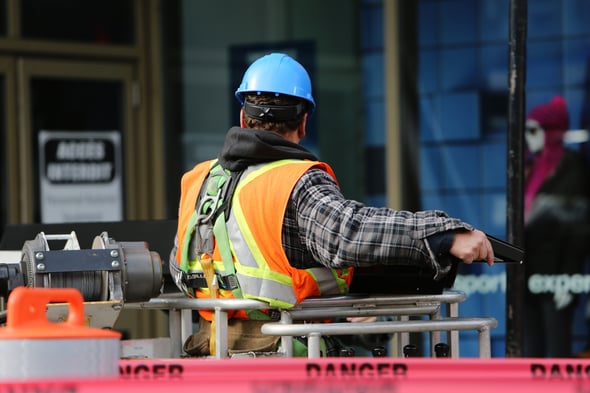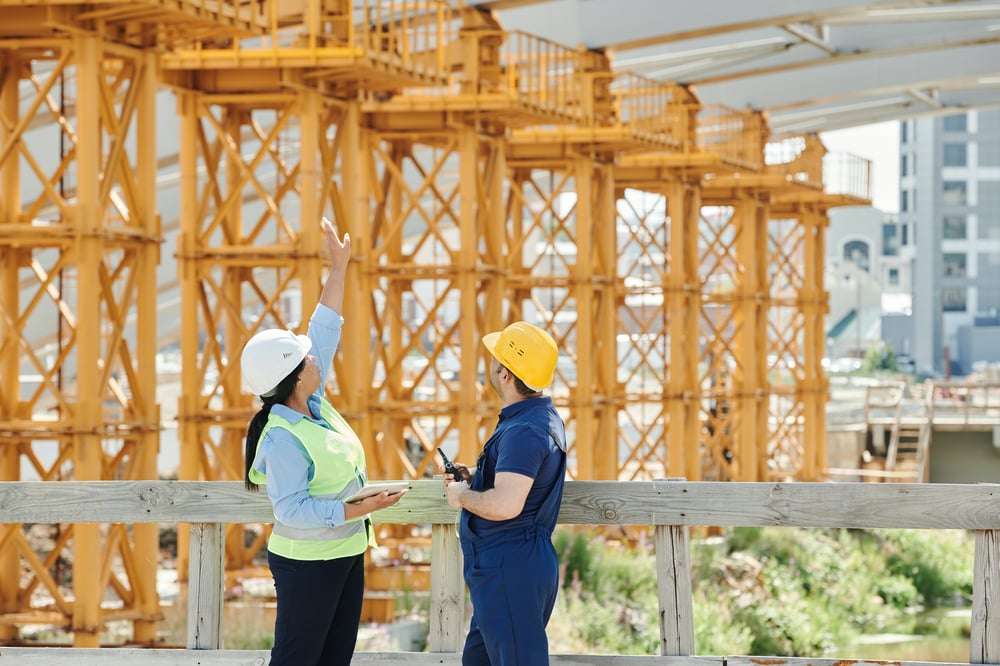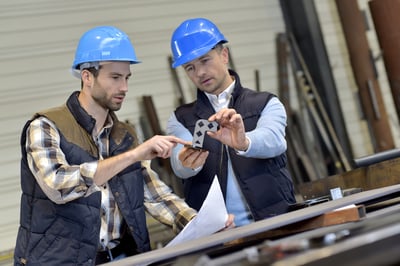The health and safety of employees is paramount to any business. However, this is especially true for the construction industry where workers engage in high-risk activities on a daily basis.
Although health and safety in construction has come a long way, it remains a major pain point for many companies. According to the US Bureau of Labor Statistics, construction is responsible for 20% of worker deaths in the US, despite only making up 6% of the workforce. Performance is no better on the non-fatal front, where injury rates in construction are 24% higher than in any other industry.
This is resulting in significant costs. As an industry, total workplace injury costs in construction exceed $170 billion each year, and worker’s compensation claims for non-fatal accidents total $2.5 billion annually. For individual businesses, the average cost of a workplace claim is $40,000, and OSHA penalties can cost up to $156,259 for safety and compliance violations.
Whichever way you look at it, everyone benefits from improved health and safety practices and the resulting reductions in injuries. And while you can’t stop injuries entirely, there are best practices that will help you come close.
Interested? Then keep reading to find out the top safety risks on construction sites and how to prevent them, and access our FREE construction site safety checklist that will prove to be a valuable addition to your health and safety toolkit.

Top Safety Risks on Construction Sites
There are many potential risks in construction, and each site poses its own unique challenges. Below is a list of the most common hazards.
1. Working from Heights
The construction of buildings and structures means tradesmen frequently work from a great height. This leaves them vulnerable to serious injury and fatal falls.
To mitigate accidents, frontline managers must ensure their workers receive specific training that informs them how to maneuver and safely work from heights.
2. Moving Objects
Construction sites are, by nature, chaotic and with a lot of moving parts that range from an on-the-go workforce to equipment shifting heavy loads.
Keep your workforce safe by supplying them with Personal Protective Equipment (PPE) such as high-vis clothing, to ensure they’re seen. And highlight the importance of being aware of your surroundings to prevent accidental collisions with machinery and/or other employees.
3. Slips, Trips, and Falls
Considering the working environment of your average tradesman, it’s no surprise to see slips, trips and falls on the list. Whether it’s working from great heights, on an uneven surface, or in the pouring rain, construction workers are always at risk of all three.
Best practices to reduce these hazards include wearing the right footwear, keeping walkways clear, and putting up signs warning of difficult conditions.
4. Noise
Noise is a major hazard within the construction industry. However, it is sometimes overlooked due to its long-term, rather than immediate, impact. Regular exposure to loud noises leads to long-term hearing problems while also acting as a distraction in the moment.
Ensure your workforce are using the appropriate PPE. Sometimes earplugs won’t cut it and a thorough risk assessment is needed to determine what equipment is needed for every situation.
5. Hand Arm Vibration Syndrome (HAVS)
HAVS is a disease of the joints, nerves and blood vessels, brought on by the continued use of power tools and other equipment. It’s common among former construction workers who worked in the industry before the widespread adoption of health and safety measures.
Steps to prevent the disease include investing in anti-vibration tools, using the correct PPE such as gloves, and training on how to best hold tools.
6. Material Handling
Material handling is one of the major components of construction work, and whether handled manually or via machinery, there’s always a risk.
Effective and informative training is the best way to reduce accidents related to material handling. A thorough onboarding process should cover how to use machinery, how to lift correctly, and everything else relevant to the role.
7. Asbestos
Asbestos - just saying the word is enough to put construction workers on high alert. And for good reason, as breathing in asbestos fibers can lead to diseases such as asbestosis and lung cancer.
Sometimes incorrectly viewed as a historical problem, construction workers should remain aware that around 20% of commercial and public buildings in the US contain some asbestos material. And if they do ever come across it, they should know what steps to take to avoid problems.
8. Electricity
An average of 143 construction workers a year are killed due to electrocution. Other groups at heightened risk include those working near power lines, and tradesmen who interact with electricity despite not being trained electricians, think plumbers and decorators.
Like many other hazards, accidents can be reduced via effective training. Businesses are adopting entire courses dedicated to electrical hazards due to its widespread use and potentially deadly consequences.
9. Excavations
Excavation is the process of removing rock, soil, or other materials with equipment and sometimes explosives. Those who carry out such work are at risk of the excavations collapsing and burying people working in them. They’re sometimes fatal.
Safe digging practices should be enforced and the excavation site should be checked every morning and after any event that might disrupt its stability.
10. Site Security
Construction sites provide complex security challenges due to the sheer amount of moving personnel and equipment. These conditions, combined with the high monetary value of tools and equipment, make construction sites prime targets for thieves.
These days businesses tend to use security personnel and advanced security systems to prevent crime from occurring. However, employees can add an additional layer of security by taking small actions that include questioning and reporting suspicious behavior and unfamiliar personnel.
How to Keep Construction Workers Safe and Reduce Accidents
In order to help you keep track of your safety procedures and make implementation as easy as possible, we’ve created our very own construction site safety checklist.
When reading through the checklist, you’ll recognize one consistent theme: the importance of adequately training your workforce.
However, when it comes to training, many construction workers are experiencing one or both of the following:
Lack of health and safety training - A recent construction survey revealed that 4 out of 5 construction personnel think their organization lacks training on identifying and preventing struck-by hazards.
Inadequate training methods - Like many industries, construction has failed to modernize its health and safety training practices. Businesses still employ long-form classroom training which fails to promote knowledge retention and engagement. In fact, learners only retain 8-10% of knowledge from in-person sessions, resulting in limited implementation and continued accidents.
eduMe is a mobile-training platform that integrates into your existing work tools and provides a more efficient way to engage and educate your frontline workforce. Engaging content formats promote higher completion rates and better knowledge retention, while our real-time reporting tools help you better monitor performance and compliance across your worksites. Those who have partnered with us are already experiencing results, with one company witnessing a 26% reduction in injuries and savings of $60,000
Scan the QR code below to try out an eduMe lesson for yourself in our brand-new Guide format 📱
If you like what you see and want to find out more about how eduMe can help your health and safety training, then get in touch with us now! 👇







